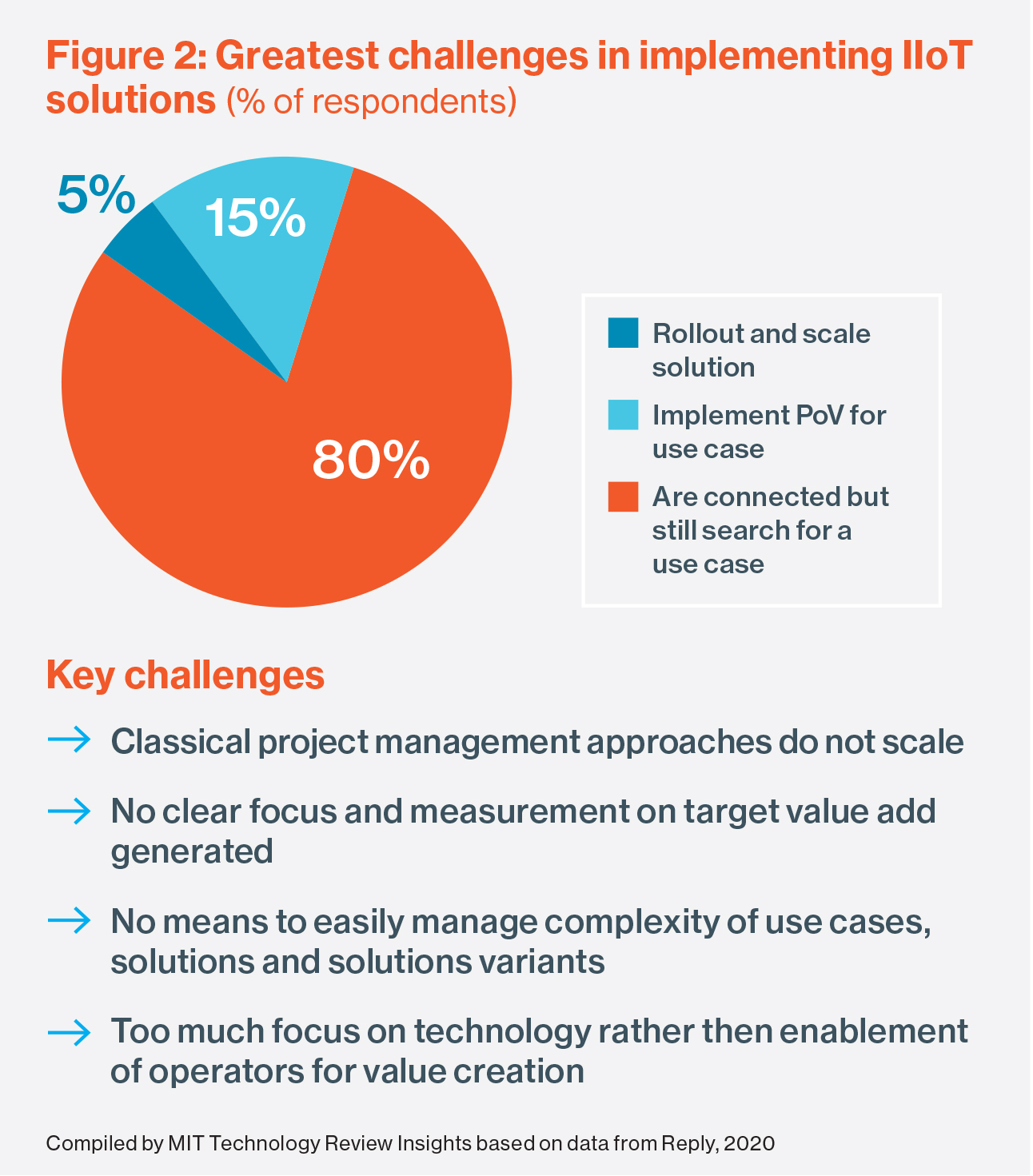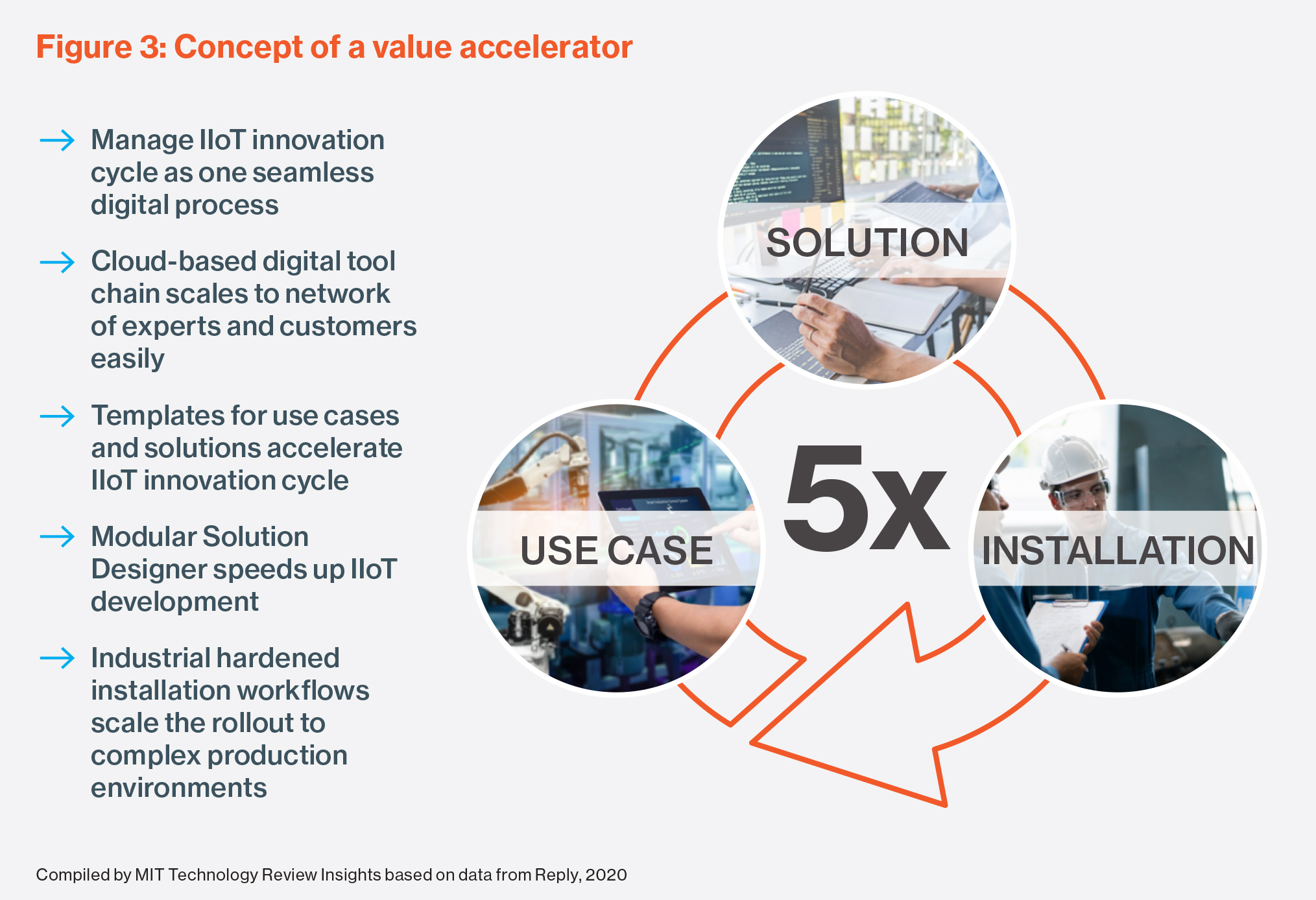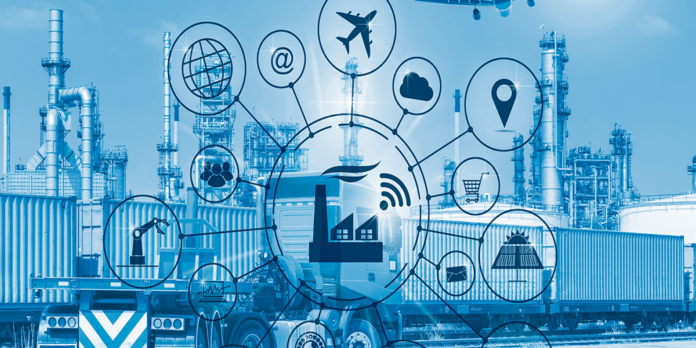Many companies expected 2020 to be a challenging year. They anticipated technological shifts that would affect their business—like the transition from combustion to electric vehicles for automotive manufacturers—or ongoing instability due to raging trade wars or Brexit. But the impact of the covid pandemic on top of these challenges has, for many companies, been unprecedented.
Never before have today’s generation of business leaders faced such a dramatic change in conditions in such a short period of time. Covid forced industrial and manufacturing companies to re-examine their perspectives on how digital solutions can and should contribute to future competitiveness. It has been much more evident that digital technologies like industry 4.0 and the industrial internet of things (IIoT) offer huge potential in enabling the fast implementation of many novel, value-adding use cases built across one common technology stack. These use cases could optimize production, supply chain operations, and resilience, as well as offering novel services—for example, connected products in many industries. Consequently, industrial companies are channeling additional resources into IIoT budget and projects as indicated by a recent IDC study (see Figure 1).
Additionally, technology investments that companies had made prior to covid with the aim of making cost savings (for example, Volkswagen’s industrialcloudhub and BMW’s open-manufacturing-platform) were suddenly mission-critical for delivering concrete, measurable business value at scale in a short amount of time.
The cost pressures that arrived with the pandemic, along with an increased need to deliver returns on investment, have led to an acceleration of digitalization as a key enabler for the future. But there is still a huge task ahead of these companies to really transform their production and business operations to generate additional value with IIoT and other industry 4.0 technologies.
The use case and PoV purgatory
Given this background, there has been a lot of activity within industrial companies to close the digital divide and reap the benefits of industry 4.0. While many are driving strategic digitalization projects and “proof of value” (PoV) efforts according to a recent study of a 150 customer projects by Reply, 95% of companies today are struggling to use IIoT solutions at scale and or use it to generate a competitive advantage (see Figure 2).

Given the fact that about 95% of industrial companies surveyed by Vodafone expect increased efficiency from digitalization, and the implementation of novel technologies is the future of production, this is a striking observation. It indicates that there are substantial underlying challenges to be overcome before companies can adopt IIoT and generate value at scale.
To address this, Reply consolidated its experience of over 100 industrial digitalization projects, examining customers’ ability to generate value from industry 4.0 and IIoT solutions, and the patterns that occur in cases where they fail to do that. Our analysis found the following main themes to be addressed:
Digitalization and IIoT need to be one, scalable, continuous effort
One of the most consistent observations is that the vast majority of industry 4.0 and digitalization projects are driven based on a “project management office” (PMO)-like approach. This means that there are dedicated resources assigned to drive workshops, technology integration, and installations to drive industry 4.0. This rather top-down approach runs the risk of IIoT initiatives being seen as “another project” by the rest of the organization, or even worse, as the next cost-cutting exercise, instead of a continuously ongoing change in innovation and value creation supported by the whole organization.
Value 4.0 over industry 4.0: Integrated value design needs to come first
Technological discussions are essential to provide a solution to a defined improvement area or challenge, but they are meaningful only after there has been a clearly defined use case with concrete and measurable value identified and captured within financial reporting systems. This means that each effort should start with an integrated value design, rather than technology. It needs to be integrated in the sense that the designed target value can be directly linked to an outcome —for example, process improvements enabled by the digital solution that generated a measurable value impact. Value and solution design need to be one integrated effort. In consequence, this also implies that use cases need to be defined bottom-up, by the operators and resources that operate production and thus realize value add, rather than top-down.
Using technology to manage complexity and rollout at scale
Within industrial settings, implementing industry 4.0 technologies takes more time and effort, compared to applications in the consumer space, for a variety of reasons. Any industrial customer today depends on existing brownfield installations to run and operate their business—these are mostly highly complex and tailored to the targeted product. Managing this complexity manually would be a Sisyphean struggle. When industrial companies are integrating digital manufacturing and supply chain solutions with their customers, they need to continually adapt the solution stack to customer requirements. In addition, rolling out solutions in global production networks needs to be managed with digital, scalable workflows. Therefore, a scalable, structured solution and configuration management approach is essential. Trying to manage all this this without proper tool and digital process support will not achieve scale.
It’s about enabling people in the right manner
Finally, one of the most important observations is on how novel technology enables people in the right manner: digital solutions are only as good as the improvements they deliver in operations and processes. These operators do not care about the specifics of the technology stack—they care about the improvements it realizes for them. Therefore, involving these experts and operators in the process, enabling them to contribute effectively, and allowing them to be part of the solution design is essential.
In summary, these challenges result in a lack of focus on value generation from digital solutions, and result in limited scalability of solution design, adaptability, and customization, as well as ongoing difficulties in the rollout and installation stages, where value creation needs to happen. Taking this into account, it is no wonder why industrial companies are struggling to reap the benefits anticipated from digitalizing their production environments.
What problem are you solving for? Value 4.0–value accelerators are on the rise
We believe that IIoT value challenges can and should be addressed by suites of digital tools that create scalable, continuous innovation and processes for rolling out novel solutions. These tool chains might be called value accelerators for digitalization and IIoT, as they focus on identifying and scaling value from a use case innovation, solution management, and rollout rather than the details of the technological stack itself (see Figure 3).

Why do we believe that such a digitally guided process is viable? Because with a proper design, value accelerators fundamentally address the key challenges to industry 4.0 and IIoT adoption. They provide a platform for digitally managed innovation across all relevant stakeholders. The process is scalable to any number of users and can be centrally administered. The key benefits of value accelerators are:
Accelerated adoption with wizards and templates
Innovation and adoption depend a lot on acceptance by stakeholders. A digital value accelerator can tremendously reduce barriers with well-defined wizards that guide users through innovation processes. Predefined templates and solutions can greatly accelerate the definition of use cases and solutions.
Modular solution design and digital installation workflows
Modular use cases and solution designers can help manage complexity and variance by providing users with a continuously extended library of solution elements and integrations that can be combined to deliver the target value as well as the technical solution stack. In addition, each use case and solution stack can have a digital workflow to guide operators through the installation process, allowing them to cooperate globally with solution designers and experts as needed.
Continuous learning system and artificial intelligence
Digital value accelerators provide a process and data structure that cover industry 4.0 and IIoT innovation and rollout, creating datasets that can be analyzed to continuously improve and accelerate digitalization in industrial environments. AI-powered recommendation engines can propose solutions to operators or give solution designers hints on how to improve their concrete technological stack
Intelligent automation increases adoption
Structured use case, solution, and process information enables further automation of today’s tedious tasks. For example, providing cloud-based services can be automated so that operators can work independently, rather than following lengthy installation procedures in a joint effort with IT.
All of these processes and benefits can be delivered by a digital system tailored to allow industrial organizations to accelerate value from digitalization. The system, which operates at a meta level above the concrete solution technology or cloud stack to be deployed, covers the whole innovation cycle from use case and target value-add design, to solution design and configuration, and installation and enablement in the field. This is supported by respective digital wizards, solution element libraries, and digital workflows, allowing for a continuous solution adoption through structured feedback loops and holistic implementation and configuration management (see Figure 4).

Industry 4.0 is an incremental transformation, not a ‘Big Bang’
What does all this mean for IIoT and industry 4.0? A value accelerator approach helps companies consistently and continuously identify value-adding use cases and solutions. Calculations show that it has generated value at five times the rate of classic project management office approaches. Customer feedback suggests that the value accelerator has the potential to take IIoT to the next level; IIoT partners say this technology will deliver greater value to their customers.
Value accelerators will change the way IIoT and industry 4.0 are implemented in industrial settings and will become essential for efficient and profitable digitalization. “Big Bang” digitalization projects will evolve into digitally enabled continuous innovation, transforming companies use case-by-use case. These accelerators will enable networks of solution specialists who can collaborate with operators in scalable and mutual reinforcing ways to drive value creation. This incremental approach lacks the immediate visibility of traditional large projects, but with more substantial and sustainable results. This is what counts in industrial digitalization.
Learn more about tackling complex industrial projects from Reply’s Axulus.
This content was produced by Reply. It was not written by MIT Technology Review’s editorial staff.





